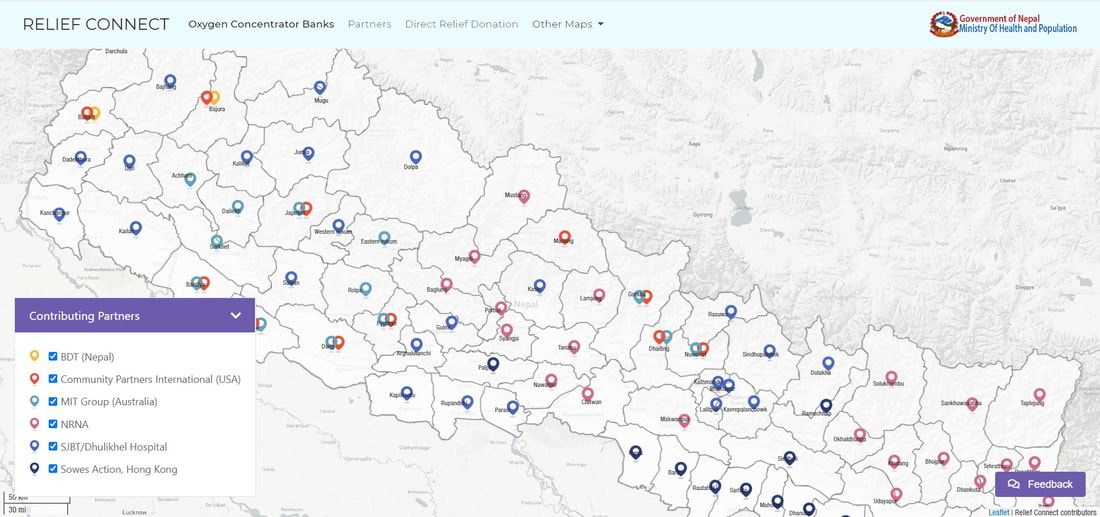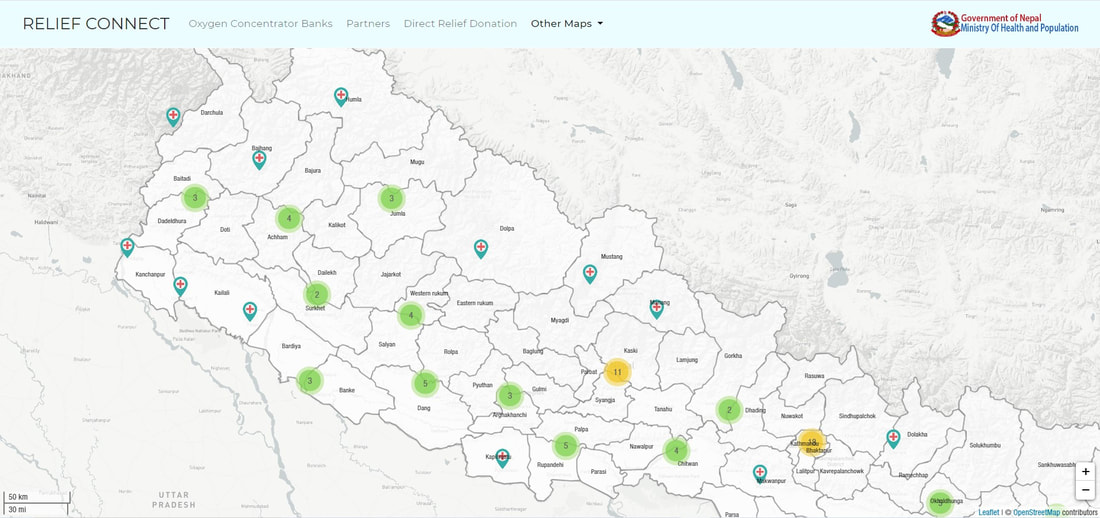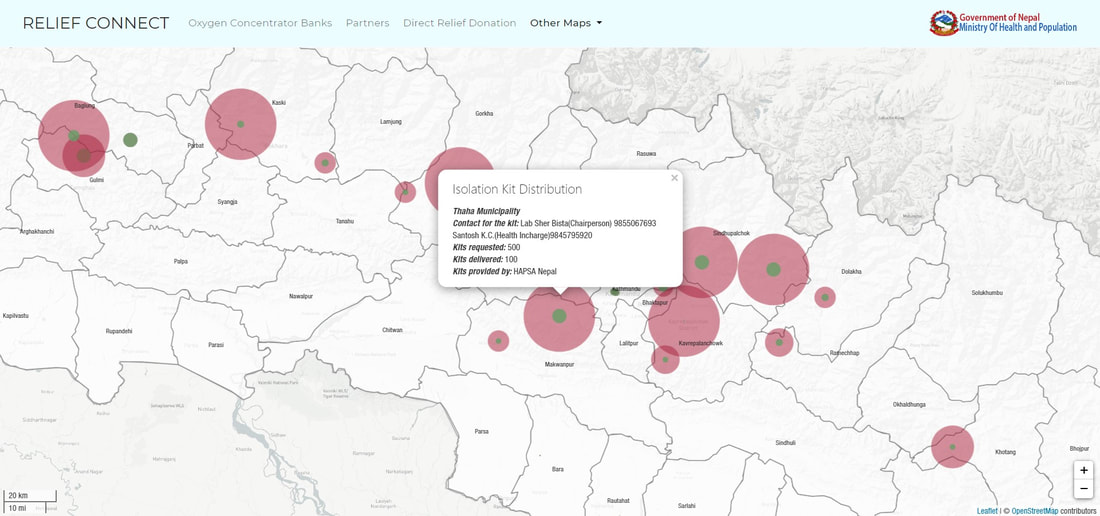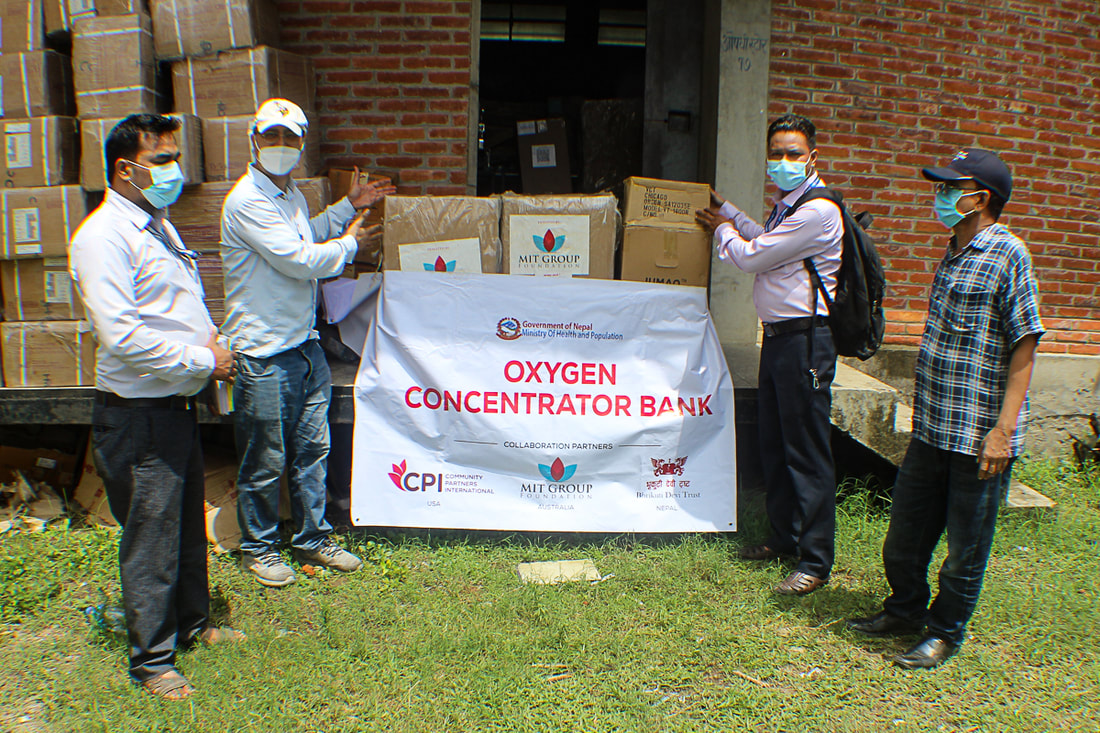|
COVID-19 moves fast, and ever faster as new, more infectious variants emerge. This creates challenges for all public health systems but especially those in low-resource settings like Nepal. In these contexts, the ability to track resource needs and gaps in an accurate and timely way and deploy limited resources efficiently becomes even more crucial in the race to save lives. Seeking to address these challenges in Nepal, Community Partners International (CPI), the blockchain tech company Ibriz and design agency Kazi Studios have created an open online platform called Relief Connect - reliefconnect.org. Relief Connect is an online map-based data platform that tracks COVID-19 resource availability and needs across Nepal. Using real-time data provided by a consortium of data partners, the platform helps Nepal’s Ministry of Health and Population, health providers, aid agencies and the general public to see in real time where resources are needed most and coordinate the response. In the last two months, Nepal has experienced a catastrophic spike in COVID-19 cases. Health facilities have been overwhelmed and there are widespread shortages of critical care facilities, oxygen supplies, medicines, test kits and personal protective equipment. “The Relief Connect platform grew out of our efforts to meet the oxygen needs of COVID-19 patients in remote locations in Nepal,” explains Bijay Niraula, CPI’s COVID-19 Response Lead in Nepal and Ibriz CEO. “We were distributing oxygen concentrators around the country, using QR codes to track them, but there was no quick way to track needs in real time and coordinate the response.” “We’d receive scattered reports of urgent needs for oxygen and isolation kits from different parts of the country but it was difficult to verify exact needs and quickly coordinate with other organizations to avoid duplication.” continues Bijay. “Also, there was no efficient and timely way to identify a resource surplus so that we could redeploy to lcoations in need.” While still in beta version, the Relief Connect platform is helping to solve these challenges. “All MoHP-approved hospitals and isolation centers are now mapped on Relief Connect. This gives the viewer an immediate understanding of where the most under-served areas are,” explains Bijay. “We are mapping the demand and supply data of COVID-19 isolation kits in municipalities across Nepal and the number and location of oxygen concentrators supplied by partners. This means that we know what resources we have and where, and where they are needed most. With this information, we can work together to coordinate resource distribution, and redeploy resources as COVID-19 outbreaks move." Together with Community Partners International, Ibriz and Kazi Studios, the Relief Connect platform has been brought to life with important contributions from several partners. It was developed with support from the MIT Group Foundation, Bitsbeat, the Nepal Healthcare Equipment Development Foundation, and the Kitten Nursery Club. Data partners include Mountain Heart Nepal and the Bhrikuti Devi Trust. Advisors include the Nepal Institute for Development Studies and the Nepal Ministry of Health and Population.
Moving ahead, Relief Connect partners will continue to expand and update the platform data to support Nepal’s COVID-19 response. “We are also looking at how we can bring the Relief Connect data platform to support other countries in the region with similar needs, such as Bangladesh and Sri Lanka,” reveals Bijay. “We think it could have a positive impact on their COVID-19 response too, and support similar efforts across South Asia.” Relief Connect is part of broader efforts by Community Partners International and partners to provide emergency COVID-19 relief to Nepal. To date, Community Partners International, the MIT Group Foundation, and the Bhrikuti Devi Trust have extended critical COVID-19 support to the Nepal health system, including the provision of 380 oxygen concentrators and other essential supplies including gloves, masks, sanitizers, and personal protective equipment (PPE). These supplies have been distributed across various districts in Nepal, with a particular focus on remote and under-served central and far western regions. Comments are closed.
|
AuthorCPI Admin Archives
July 2024
Categories
All
|
|
|
COMMUNITY PARTNERS INTERNATIONAL
580 California St Fl 16, Ste 1658, San Francisco, CA 94104-1068, USA [email protected] +1 510 225 9676 We are a registered nonprofit 501(c)(3) Public Charity. TAX ID 94-3375666 |
©
Community Partners International





 RSS Feed
RSS Feed
